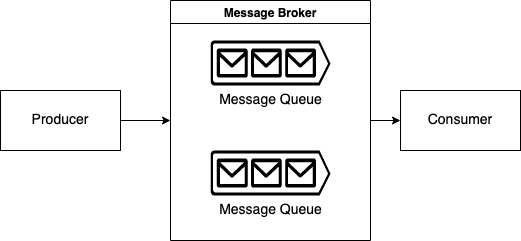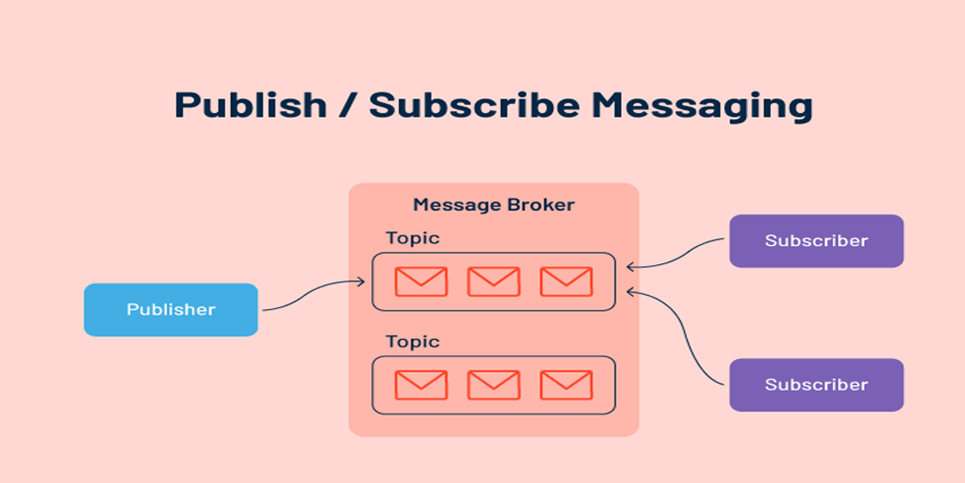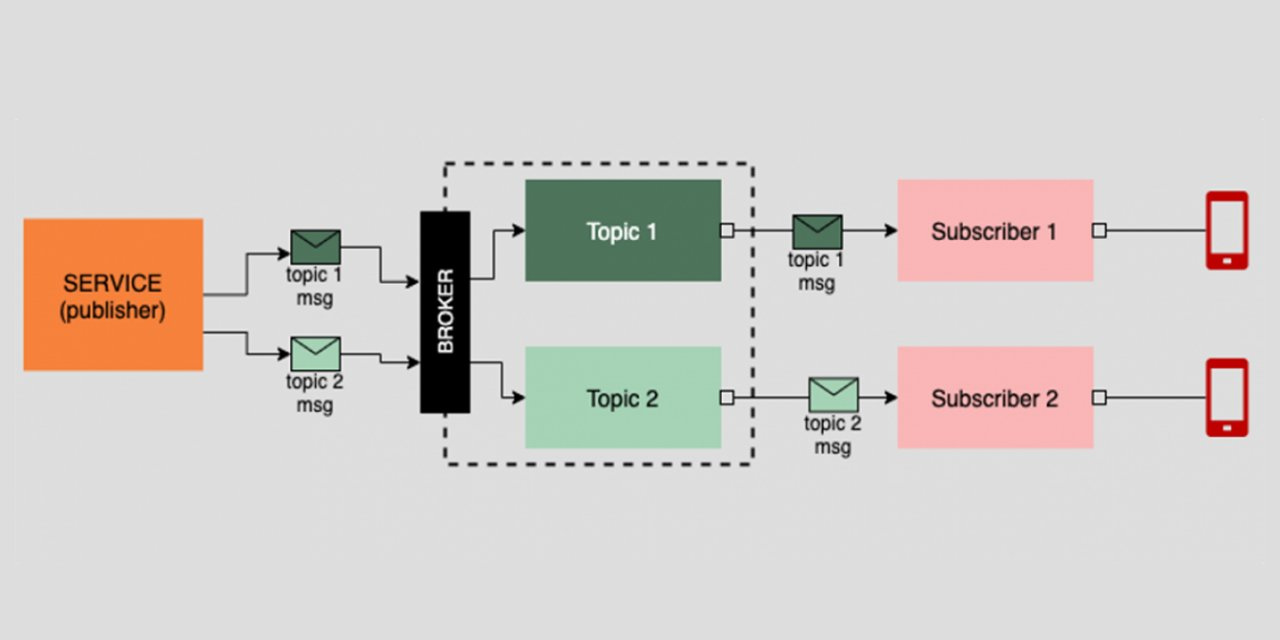What is a Message Broker?
A message broker is software that enables applications, systems, and services to communicate and exchange information. It achieves this by translating messages between different messaging protocols, allowing interdependent services to communicate directly, even if they are written in different languages or run on different platforms.
Message brokers are components of messaging middleware or message-oriented middleware (MOM) solutions. This middleware standardizes data flow management between an application’s components, enabling developers to focus on core logic. It serves as a distributed communications layer, facilitating internal communication across multiple platforms.
ad
Message brokers can validate, store, route, and deliver messages to the appropriate destinations, acting as intermediaries between applications. They enable senders to send messages without knowing the receivers’ locations, statuses, or quantities, thus decoupling processes and services within systems.

For reliable message storage and guaranteed delivery, message brokers often use a message queue. This component stores and orders messages until the receiving applications can process them. Messages in a queue are kept in the order they were sent and remain there until confirmed as received.
Asynchronous messaging, enabled by message brokers, ensures no data loss and system functionality despite intermittent connectivity or latency issues common in public networks. It guarantees that messages are delivered once, in the correct order relative to others.
ad
Message brokers may include queue managers to handle interactions between multiple message queues and services that provide data routing, message translation, persistence, and client state management functionalities.
Message broker models
Message brokers offer two basic message distribution patterns or messaging styles:
Point-to-point messaging
This pattern is used in message queues with a one-to-one relationship between the sender and receiver. Each message in the queue is sent to only one recipient and consumed only once. Point-to-point messaging is needed when a message must be acted upon only one time. Examples of suitable use cases include payroll and financial transaction processing, where both senders and receivers require a guarantee that each payment will be sent once and only once.

Publish/subscribe messaging
Often referred to as “pub/sub,” this pattern involves the producer publishing each message to a topic, and multiple consumers subscribing to topics from which they want to receive messages. All messages published to a topic are distributed to all subscribed applications. This broadcast-style method establishes a one-to-many relationship between the publisher and its consumers. For instance, an airline disseminating updates about flight landing times or delays can use pub/sub messaging so that multiple parties, such as ground crews, baggage handlers, flight attendants, pilots, and visual display operators, can use the information. This messaging style is suitable for scenarios like these.


Message brokers in cloud architectures
Cloud-native applications are designed to leverage the inherent benefits of cloud computing, such as flexibility, scalability, and rapid deployment. These applications consist of small, discrete, reusable components called microservices. Each microservice is deployed and runs independently, allowing updates, scaling, or restarts without impacting other services in the system. Often packaged in containers, microservices collectively form an entire application, with each having its own stack, including a database and data model, which may differ from others.
For microservices to operate together, they must communicate with one another. Message brokers provide a mechanism for establishing this shared communications backbone.
Message brokers are often used to manage communications between on-premises systems and cloud components in hybrid cloud environments. They provide increased control over interservice communications, ensuring data is sent securely, reliably, and efficiently between application components. In multicloud environments, message brokers facilitate communication between workloads and runtimes on different platforms. They are also well-suited for serverless computing, where individual cloud-hosted services run on demand on a per-request basis.
Message brokers vs. APIs
REST APIs are commonly used for communication between microservices. Representational State Transfer (REST) defines principles and constraints for building web services, enabling any services that follow these principles to communicate via uniform, stateless operators and requests. An Application Programming Interface (API) denotes the underlying code that, if it adheres to REST rules, allows services to interact with each other.
REST APIs use Hypertext Transfer Protocol (HTTP) for communication. Since HTTP is the standard transport protocol of the public Internet, REST APIs are widely known, frequently used, and broadly interoperable. HTTP is a request/response protocol, making it best suited for synchronous request/reply situations. This means services using REST APIs must expect immediate responses. If the client receiving the response is down, the sending service will be blocked while waiting for the reply. Therefore, both services should incorporate failover and error-handling logic.
Message brokers, on the other hand, enable asynchronous communication between services, so the sending service does not have to wait for a reply from the receiving service. This enhances fault tolerance and system resilience. Additionally, message brokers facilitate system scaling by supporting a pub/sub messaging pattern that can handle varying numbers of services. They also manage the states of consumers.
Message brokers vs. event streaming platforms
While message brokers can support multiple messaging patterns, such as message queues and pub/sub, event streaming platforms only provide pub/sub-style distribution. Event streaming platforms are designed to handle high volumes of messages and are easily scalable. They order streams of records into categories called topics and store them for a predetermined duration. However, unlike message brokers, event streaming platforms cannot guarantee message delivery or track which consumers have received messages.
Event streaming platforms offer greater scalability than message brokers but have fewer features for ensuring fault tolerance, such as message resending. They also have more limited capabilities for message routing and queuing.
Message broker vs. ESB (enterprise service bus)
An enterprise service bus (ESB) is an architectural pattern used in service-oriented architectures (SOAs) across enterprises. In an ESB, a centralized software platform unifies communication protocols and data formats into a common language that all services and applications in the architecture can share. For example, it might translate requests from XML to JSON. ESBs transform message payloads through an automated process and handle other orchestration logic, such as connectivity, routing, and request processing.
However, ESB infrastructures are complex, challenging to integrate, and expensive to maintain. They are difficult to troubleshoot in production environments, not easy to scale, and updating them is tedious.
Message brokers offer a lightweight alternative to ESBs, providing a similar mechanism for interservice communications in a simpler and more cost-effective manner. They are well-suited for microservices architectures, which have become more popular as ESBs have declined in use.
Message broker use cases
Implementing message brokers can address a wide variety of business needs across industries and diverse enterprise computing environments. They are useful whenever reliable inter-application communication and assured message delivery are required.
Message brokers are often employed in the following ways:
- Financial transactions and payment processing: Ensuring that payments are sent once and only once is critical. A message broker can handle transaction data to ensure that payment information is not lost or accidentally duplicated, provide proof of receipt, and enable reliable communication even when intermediary networks are down.
- E-commerce order processing and fulfillment: The reliability of your website and e-commerce platform is crucial to your brand’s reputation. Message brokers enhance fault tolerance and guarantee that messages are consumed once and only once, making them ideal for processing online orders.
- Protecting highly sensitive data at rest and in transit: For industries that are highly regulated or face significant security risks, a messaging solution with end-to-end encryption capabilities is essential.
FAQ’s
What is a message broker?
A message broker is software that enables applications, systems, and services to communicate and exchange information. It translates messages between different messaging protocols, allowing services to communicate directly, even if they are written in different languages or run on different platforms.
How do message brokers work?
Message brokers validate, store, route, and deliver messages to the appropriate destinations. They act as intermediaries between applications, enabling senders to send messages without needing to know the receivers’ locations, statuses, or quantities. This decouples processes and services within systems.
What are the primary messaging patterns supported by message brokers?
Message brokers support two primary messaging patterns: point-to-point and publish/subscribe (pub/sub). Point-to-point messaging involves a one-to-one relationship between sender and receiver, while pub/sub messaging involves a one-to-many relationship where messages are published to a topic and received by all subscribers.
What is the difference between a message broker and an API?
While REST APIs use HTTP for synchronous communication, message brokers enable asynchronous communication between services. This means that message brokers can improve fault tolerance and system resilience, as the sending service does not have to wait for a reply from the receiving service.
How do message brokers enhance cloud architectures?
Message brokers facilitate communication between microservices in cloud-native applications. They manage communications between on-premises systems and cloud components in hybrid cloud environments and enable communication between workloads on different platforms in multicloud environments. They are also suitable for serverless computing.
What are the advantages of using message brokers over ESBs?
Message brokers offer a lightweight alternative to ESBs, providing interservice communications in a simpler and more cost-effective manner. They are easier to integrate, maintain, and scale, making them well-suited for microservices architectures.
How do message brokers handle financial transactions and payment processing?
Message brokers ensure that payments are sent once and only once, preventing data loss or duplication. They provide proof of receipt and enable reliable communication even when intermediary networks are down, making them ideal for handling financial transactions.
Why are message brokers important for e-commerce order processing and fulfillment?
Message brokers enhance fault tolerance and ensure that messages are consumed once and only once, which is crucial for the reliability of e-commerce platforms. This makes them a natural choice for processing online orders and maintaining a strong brand reputation.
How do message brokers protect highly sensitive data?
For industries that are highly regulated or face significant security risks, message brokers offer end-to-end encryption capabilities to protect sensitive data both at rest and in transit.
What are the limitations of event streaming platforms compared to message brokers?
While event streaming platforms offer greater scalability, they lack features that ensure fault tolerance, such as message resending. They also have more limited capabilities for message routing and queuing, and cannot guarantee message delivery or track which consumers have received messages.
Conclusion
Message brokers are essential for reliable, scalable, and efficient communication between diverse applications, systems, and services. They enable secure, asynchronous data exchange and enhance fault tolerance and system resilience. Whether for financial transactions, e-commerce, or data protection, message brokers provide a versatile and cost-effective solution for modern business needs, supporting seamless inter-application communication in cloud-native and microservices architectures.
ad


Comments are closed.